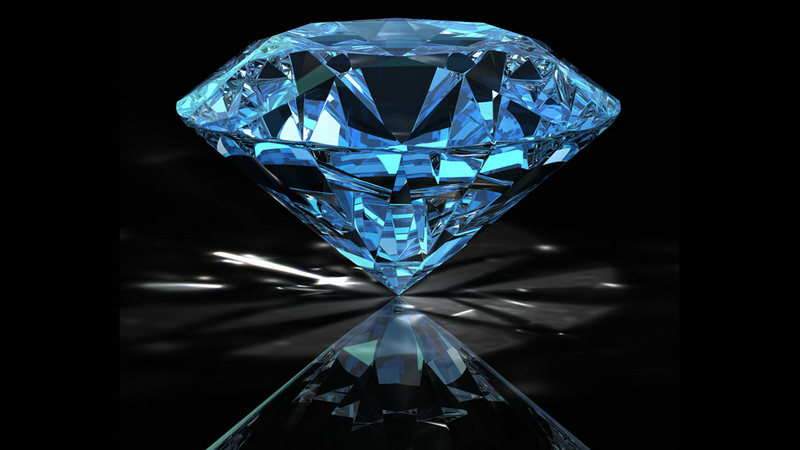Electron Configurations (1925)
In 1925, German physicist Friedrich Hund released his theory on electron configurations, called Hund’s Rules. This theory became the grounds for molecular-orbital theory and revolutionized the way that scientists studied molecules. Hund’s Rules explain many of the reasons for why different elements react in certain ways and how to determine the state of an electron in an ion. His discoveries also contributed greatly to quantum theory and understanding the structure of atoms.
Synthesis of Diamonds (1955)
Francis Bundy, H. Tracy Hall, Herbert Strong, and Robert H. Wentoff, Jr. discovered how to synthesize diamonds, releasing their work in February of 1955. This synthetic form of diamonds is known today as cubic zirconia, and hundreds of factories across the country produce these gems every day. Most of these factories use the high-pressure high-temperature technique to grow cubic zirconia by placing a diamond seed, or small crystal, within a press and heating it above 2552 °F. The solvent metal of the press then melts and dissolves the high purity carbon source, and the high pressure purifies the carbon source into a synthetic diamond.
Nuclear Fission (1938)
Fritz Strassmann discovered the process of nuclear fission in 1938 alongside physicists Lise Meitner and Otto Robert Frisch and chemist Otto Hahn. During fission, the nucleus of an atom splits into two smaller nuclei, and produces gamma rays and a large amount of energy. Strassmann and Hahn found that, when bombarded with slow neutrons, an atom of uranium would produce barium. After reporting their research to Meitner and Frisch, they found that the uranium’s nucleus had actually been split into the smaller nuclei, thus producing barium. Nuclear fission is an energy source that is semi-renewable because the energy is renewable but the uranium needed to perform nuclear fission is nonrenewable. However, nuclear fission is still a clean, efficient alternative to many energy sources.
Protein Synthesis (1964)
Mary Locke Petermann was the first to isolate animal ribosomes, where protein synthesis occurs. Protein synthesis is the process of DNA and RNA synthesis, which causes certain genes to be expressed. She isolated the ribosomes by using a technique called analytical ultracentrifugation, in which a solution is placed in a test tube and spun at a high velocity to cause certain particles to sediment, or separate, from the other particles. Once Petermann had separated the ribosomes from the rest of the solution, she was able to study them individually from the rest of the organelles. Her discoveries were monumental in the realms of biochemistry and genetics.





